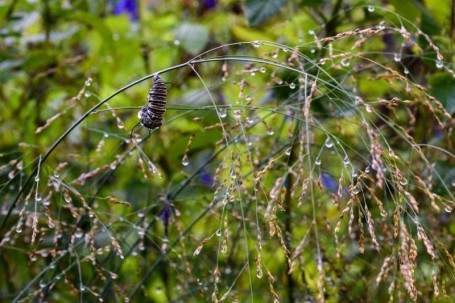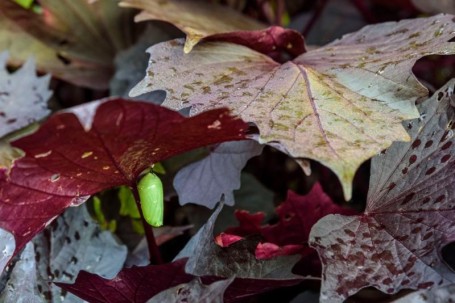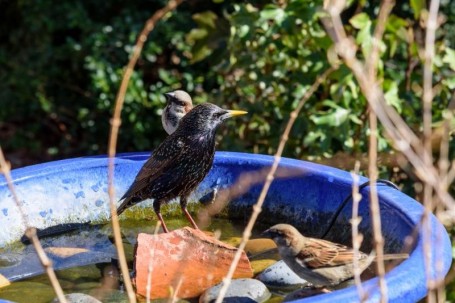Providing Winter Habitats in the Garden
December 15, 2017 at 10:00 am smithsoniangardens 2 comments
Most of the birds and some of the insects we find in the Washington, D.C. area migrate to warmer climates during the winter. However, many species stay in the DC Metro region throughout the year and must rely on a favorable habitat for food and shelter.

Unfortunately, many natural areas are shrinking due to human development. As a result, gardening choices made by the home gardener and in our public spaces are more essential than ever to the diversity of our wildlife and their continued survival. At Smithsonian Gardens, we strive to provide habitat for wildlife that goes beyond the arrival of killing frost in the fall. Here is why:
Habitat includes the food, water, and cover such as shelter and nesting sites that all living creatures need. Sometimes as gardeners, our need to clean and control our surroundings is overwhelming and the urge to “Mow and Blow” before winter is very strong: perennials and grasses cut back, all leaves removed, and everything cleaned up with the rake and the leaf blower.

However, many perennials and grasses provide an attractive winter aesthetic at the same time they offer food and shelter for overwintering species. For example, in the Washington, D.C. area, by January or February, many perennials and grasses look sloppy and flattened by ice and snow. In that mash of dead vegetation, many butterfly eggs, caterpillars, and chrysalises will be overwintering and are counting on leaf litter and dead grasses left on the ground to provide shelter.
Birds are another backyard creature that depend on the plants in your yard. Leave the seed heads of coneflowers, black-eyed Susan and grasses as they will provide needed food for foraging. Birds also benefit from the height, the layered effect and the food from many of our native shrubs including the evergreen American holly, eastern redcedar, northern bayberry and southern waxmyrtle (evergreen in town) and inkberry. Deciduous shrubs that also attract a wide variety of bird species include arrowood viburnum, staghorn sumac, winterberry holly, red and black choke cherry. These native shrubs provide overwintering birds the height they need to protect themselves from predators, food in the form of berries and, in the case of evergreens, protection from winter winds.

A source of water can be easily overlooked in the garden, particularly in winter. Overwintering birds need access to unfrozen, clean water. If you can make a heated birdbath a possibility, you will be surprised as to the number of winter visitors you get.
To encourage habitat biodiversity, keep in mind food, water and cover. When planning your garden, select native trees, shrubs, perennials and grasses for the bounty they furnish backyard critters. Remember that you do not need to clean the garden as you would your home in preparation for holiday guests. It may look a little unkempt to you, but to a foraging finch or hibernating ladybug, it is paradise.
– Alex Dencker, Horticulturist with images by Elizabeth Miller, volunteer photographer
Entry filed under: Uncategorized.
2 Comments Add your own
Leave a comment
Trackback this post | Subscribe to the comments via RSS Feed

1. Jennifer Fabre | December 15, 2017 at 11:43 am
Jennifer Fabre | December 15, 2017 at 11:43 am
Thank you very much for this informative reminder! Yes most of us have a compulsion to clean our gardens too much. We don’t want OUR garden to look like it’s not looked after!
2. Carol A. | December 15, 2017 at 10:35 am
Carol A. | December 15, 2017 at 10:35 am
Excellent!